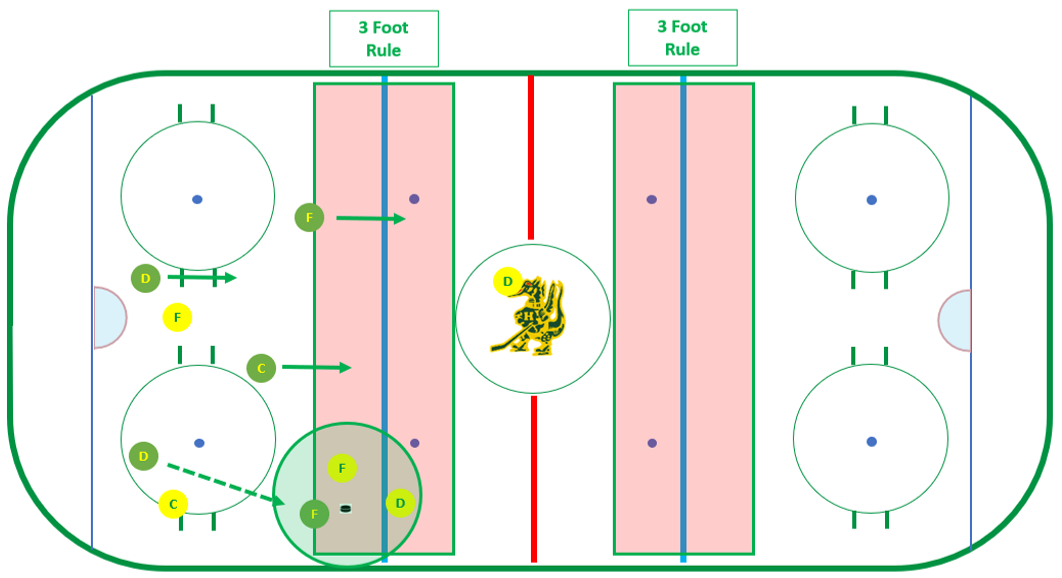HYHA Development - 3 Foot Rule
Our HYHA Development Model is a focus on hockey fundamentals & soft skills that help develop a players hockey IQ. This is in addition to the hockey hard skills (skating, shooting, passing) that you would expect from a youth hockey program.

Development Example
Here is an example of the HYHA Development Model with Coach Derek Bohan. This example focuses on turnovers in transition, and the importance of puck protection.


Turnovers
Our team goal is to not lose the puck on either blue line, also called the 3 Foot Rule (3 feet on either side of the blue line). The areas around the blue lines are danger areas because there is a high chance we have players in transition - either joining the rush, exiting the defensive zone, or changing.
3 Foot Rule
The 3 Foot Rule is a long-time rule in hockey where you shouldn’t turnover the puck within 3 feet of either blue line. The main reason for this is because those areas are where both teams are transitioning both from defense to offense and the other way around.
3 Foot Rule - Defensive Zone
In our example here our strong side forward has the puck on the boards after getting a pass from the defensemen. Our center and the other winger are busting out of the zone ready to attack. If our forward loses the puck here those two forwards are going to be caught out of the zone potentially creating an odd man rush against us.
What we want to work on here is puck protection. How are you receiving the pass, where is your body pointing? Have you shoulder checked to see if anyone is on you? Most importantly what is your plan when you get the puck?
At the Peewee level we want to start looking at puck position. If in our example here two men are crashing on you and a chip out is the only way to prevent a turnover, then that's a smart play. If we have some time and space though we want to look to make a play here and keep position.


3 Foot Rule - Offensive Zone
Equally as important are turnovers at the offensive blueline. In our example here our forwards and defense are all involved in a rush into the offensive zone. If our forward entering the zone loses the puck we potentially have 3 opponents behind all of our forwards that can create an odd man rush. Our defensemen both also have momentum going into the offensive which makes it difficult to recover and get back on defense.
If in our example the defense makes a smart gap play and is right on top of you, chipping it to the top of the circle might be a smart play. Or a tight turn turn to open up the ice. And a shot on net is almost never a bad idea, especially with two men crashing the net.



